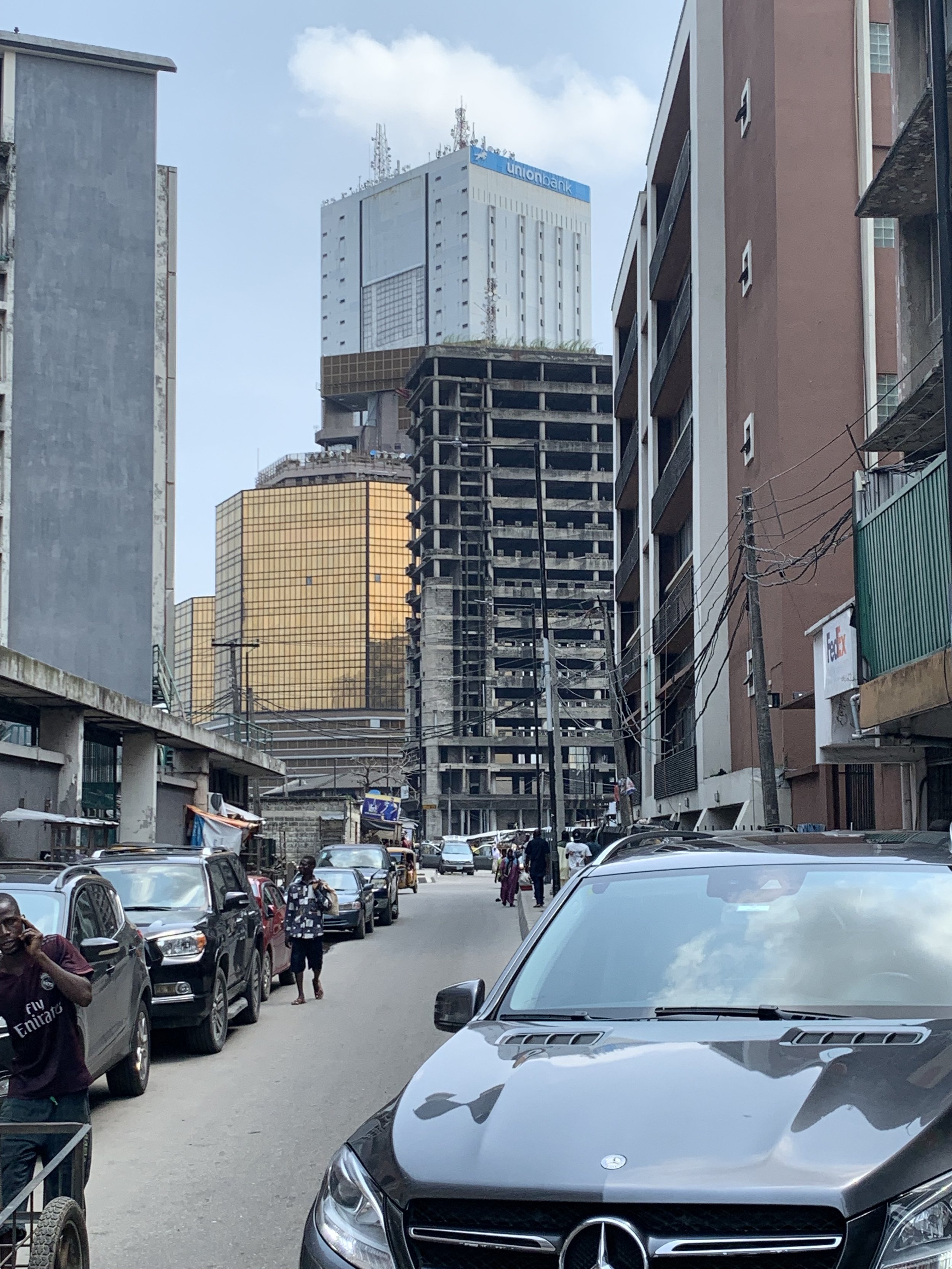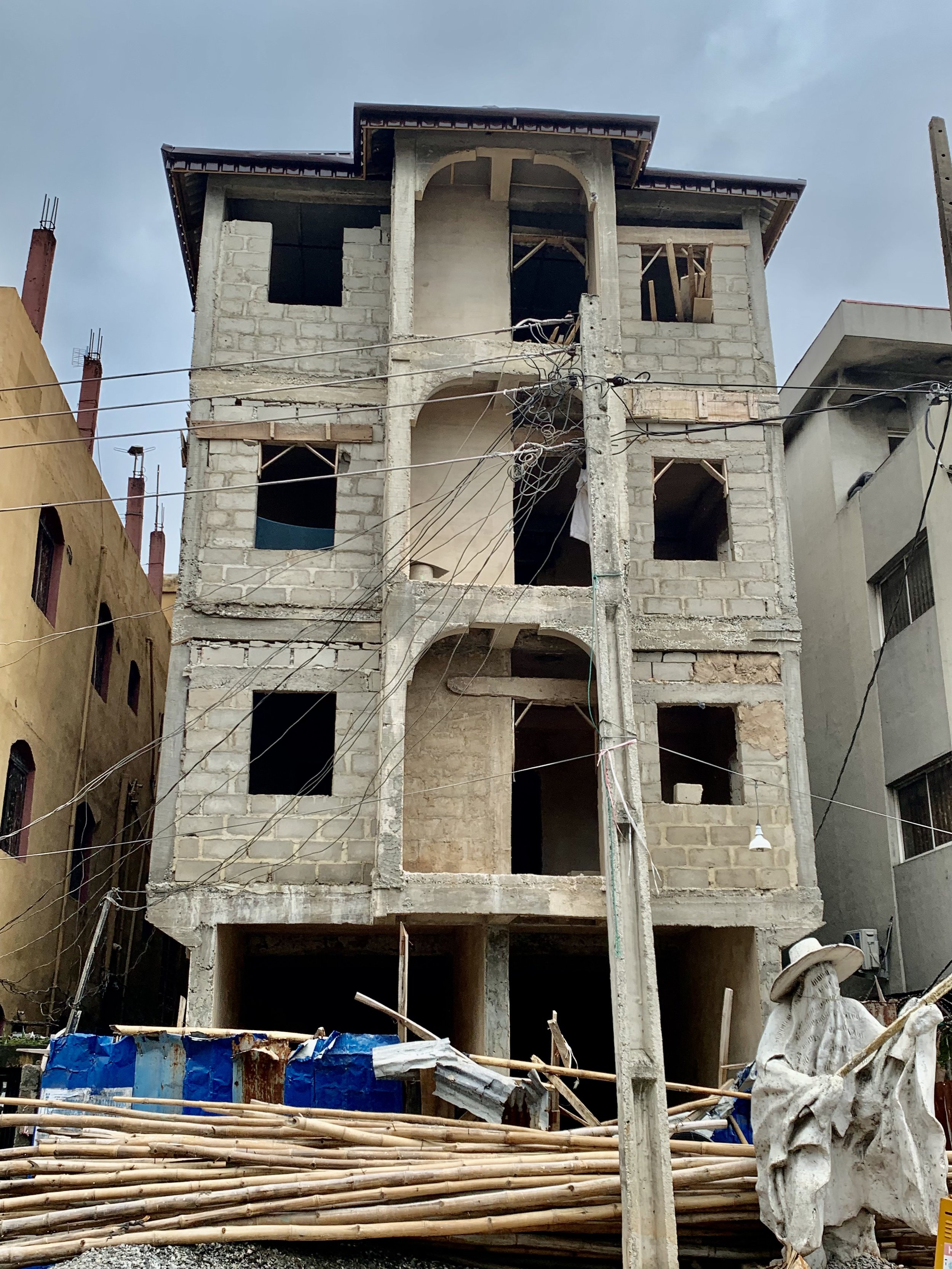Moving On
By Tau Tavengwa, 2018
The first week of my Loeb fellowship in 2017, I ticked off one of the things on my list.
During orientation I had learned about the GSD library’s rare books and drawings section and I wanted to see sketches by some famous, mostly long-dead architects who had bequeathed their papers to GSD. But in that first week, what I was most excited to take a look at, was one of the only two copies in existence of a book titled “Lagos: How it Works,” by Rem Koolhaas.
Photo: Tau Tevengwa
In 2004 or 2005, I received a DVD copy of Koolhaas’ interactive documentary—Lagos Wide and Close. In my memory, the accompanying write-up promised an upcoming book release.
It was never published.
In 1997, as part of the GSD global studio program, Koolhaas visited Beijing and other cities with students, eventually setting his sights on Lagos. In essays, and interviews that followed the trip, he had made many proclamations—Lagos was the future city; it was a model of self-organization; it was inspiring. Perhaps inadvertently, he painted the city as a dystopic hellscape—a Kowloon Walled City writ large—with splendid images of squalor and a decrepit, if at all existent, infrastructure. There were no other dimensions to it. Despite all that, he declared, it was inspirational.
When Koolhaas developed his fascination with Lagos, Nigeria was at the tail-end of a prolonged period of political instability marked by ever-changing military dictatorships. Three years before, South Africa had finally unshackled itself from apartheid. It was quickly finding its feet as part of the broader world and uncomfortably embracing its African identity, which had been discouraged during the previous regime.
As a young man living in Johannesburg at the time, I didn’t know what to make of Koolhaas’ work, nor did I trust the sincerity of these proclamations. I resented that Rem Koolhaas, after what seemed like a few trips, got to shape the global imagination and define a visual image that would be conjured when Lagos’ name is mentioned. Worse still, I resented that he saw himself as a vehicle for taming this wild, exotic frontier city, that he had the audacity to think he could design and shape its future.
Seven years later, when Koolhaas’ documentary was released, Johannesburg and Lagos were unquestionably the two capital cities of Africa, each jostling for dominance. The continent, through the African Union was making a united effort to redefine itself and work towards a clear, shared vision of its future. For the first time in a long while, there was this sense of a resurgent Africa. Imperfect as it is, this process continues.
So the timing of Koolhaas’ documentary couldn’t have been worse. Here was yet another old white Dutchman who had the arrogance to visit a place, supposedly understand it in full, decipher its problems, and divine remedies and solutions like a long-awaited prophet. It was an upsetting but unsurprising spectacle.
As I developed my work, I often circled back to the staying power of Koolhaas’ Lagos project. I found myself searching for a richer piece of writing that could cast into the broader world, a defining image of Lagos powerful enough to exorcise Koolhaas’. George Packer, who at the time was the New Yorker’s Nigeria correspondent, was critical of Koolhaas’ “intellectual excitement” about the city. “Lagos is fascinating only if you’re able to leave it,” he wrote in his 2006 dispatch, “The Megacity: Decoding the chaos of Lagos.” I found this piece more honest and devoured every reference and detail. But It wasn’t quite enough.
I read Suketu Mehta’s sublime book on Mumbai, “Maximum City”—twice—and my search for a similarly complex non-fiction book about Lagos or Johannesburg, Nairobi or Cairo continued.
I read Orhan Pahmuk’s Istanbul, and, inspired, became even more frustrated by how Koolhaas had somehow come to intellectually define Lagos for me and many others.
My frustration and near obsession with this eventually led me, in 2010, to co-found Cityscapes, a publication about “cities in the global South from their own perspective.”
So, in that first week of my Fellowship year, I sat in front of this book. I wanted to dislike it or at least walk off with some strong feelings. Instead, as I paged through it, I realized I was bored. It did not strike me as an impressive object, nor did its ideas hold sway over me. It had some interest, but it was mere curiosity. I was glad it was there—even just as a rarity, a time capsule of something that once sparked something in me—but that was about it.
I thought of all this again, in June 2022, when on a whim, I joined my wife on a business trip to Lagos. Instead of staying for the expected four days; we decided to stay for a month, working remotely. It was my first big international trip since the pandemic.
Photo: Tau Tavengwa
Lagos was not any inspiring paradise. I hadn’t expected it to be. It was frustrating, joyful, and complicated, But god, it is alive!!!
During the month, I realized I had never been to any place like it. It’s not New York, Jakarta, Beijing, Mumbai, or Cairo. Nor is it attempting to be. Lagos is Lagos—a one-of-a-kind monolithic creature full of energy that needs only to be experienced, embraced fully on its terms. I raged at the traffic but rejoiced when it moved; I was shocked by scenes of neighborhoods with barely any visible public infrastructure (a familiar scene in many cities, globally) but marveled at how this is a city with an invisible, almost unknowable intelligence that makes it possible for the 22-29 million people (there hasn’t been a census in a while) that reside there to co-exist in a highly complex and complicated, ever-shifting manner. Most of all, I felt at home. Lagos is big, black and unapologetically so, and I loved it. It reminded me I could live the same way.
By the way, I realized I had actually already found the piece of writing on Lagos I had long searched for way back in 2015. That year, Alexis Okeowo published an article titled “Lagos Must Prosper” in Granta Magazine. It painted a picture of the imperfect, complex city I experienced, from the perspective of someone that’s taken the time to know the city well. Okeowo’s Lagos is one that’s stumbling towards its many unknown futures, at once exciting, sometimes hopeful, and often depressing. There is no romance to it, but that does not make it any lesser. I had encountered her piece long before I paged through that unpublished Koolhaas book. But, I realize now, when the allure of a big name in the rare books section of GSD’s library beckoned in those early days of my Loeb fellowship, I had forgotten Okeowo’s piece and that I was no longer in the thrall of Koolhaas’ Lagos misadventure, nor did I care much about it. I had moved on.


